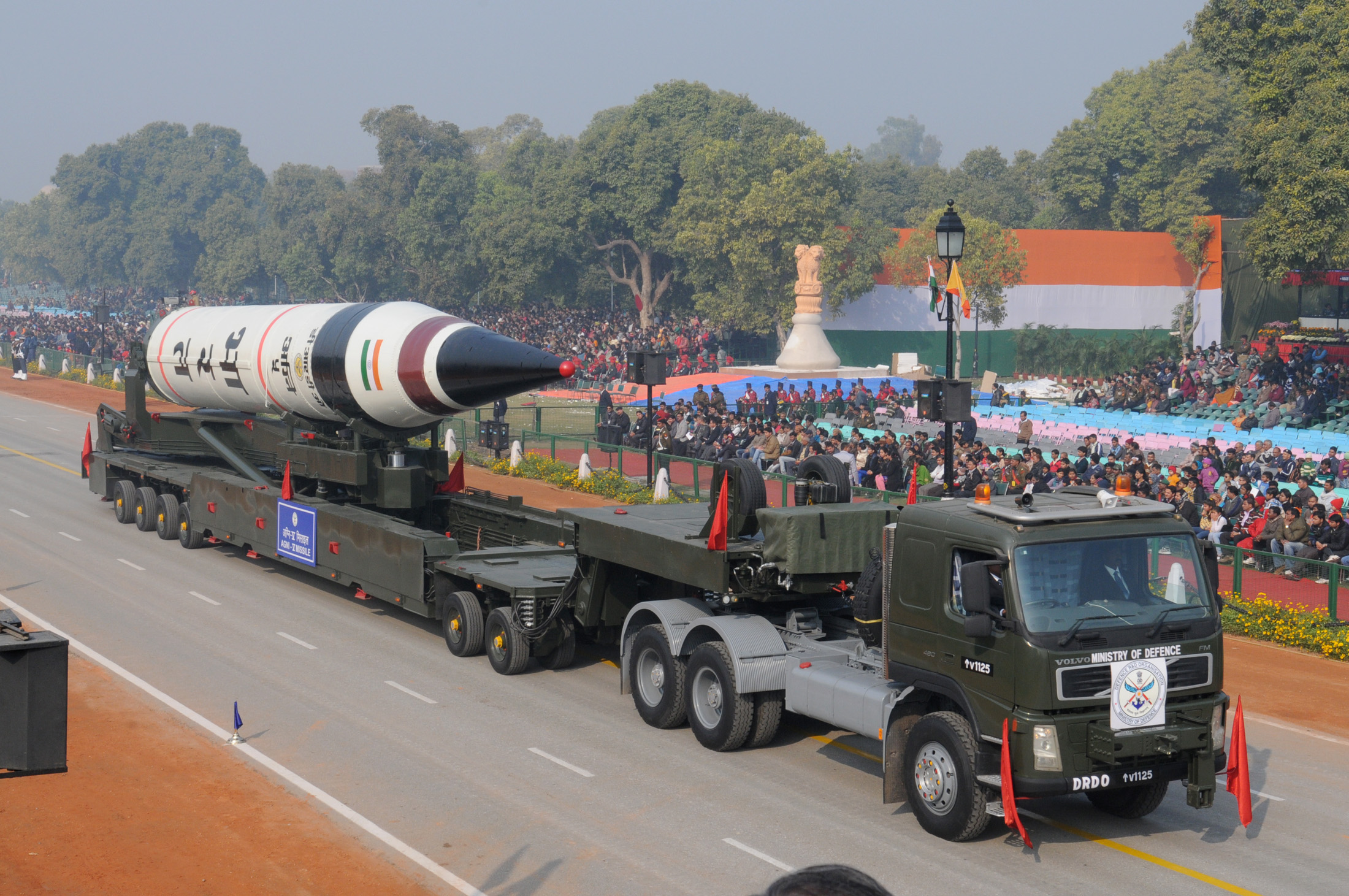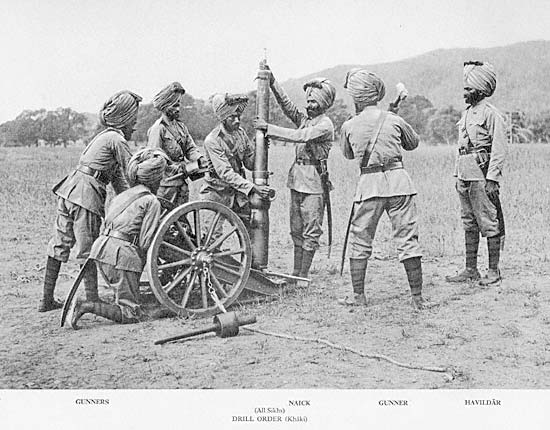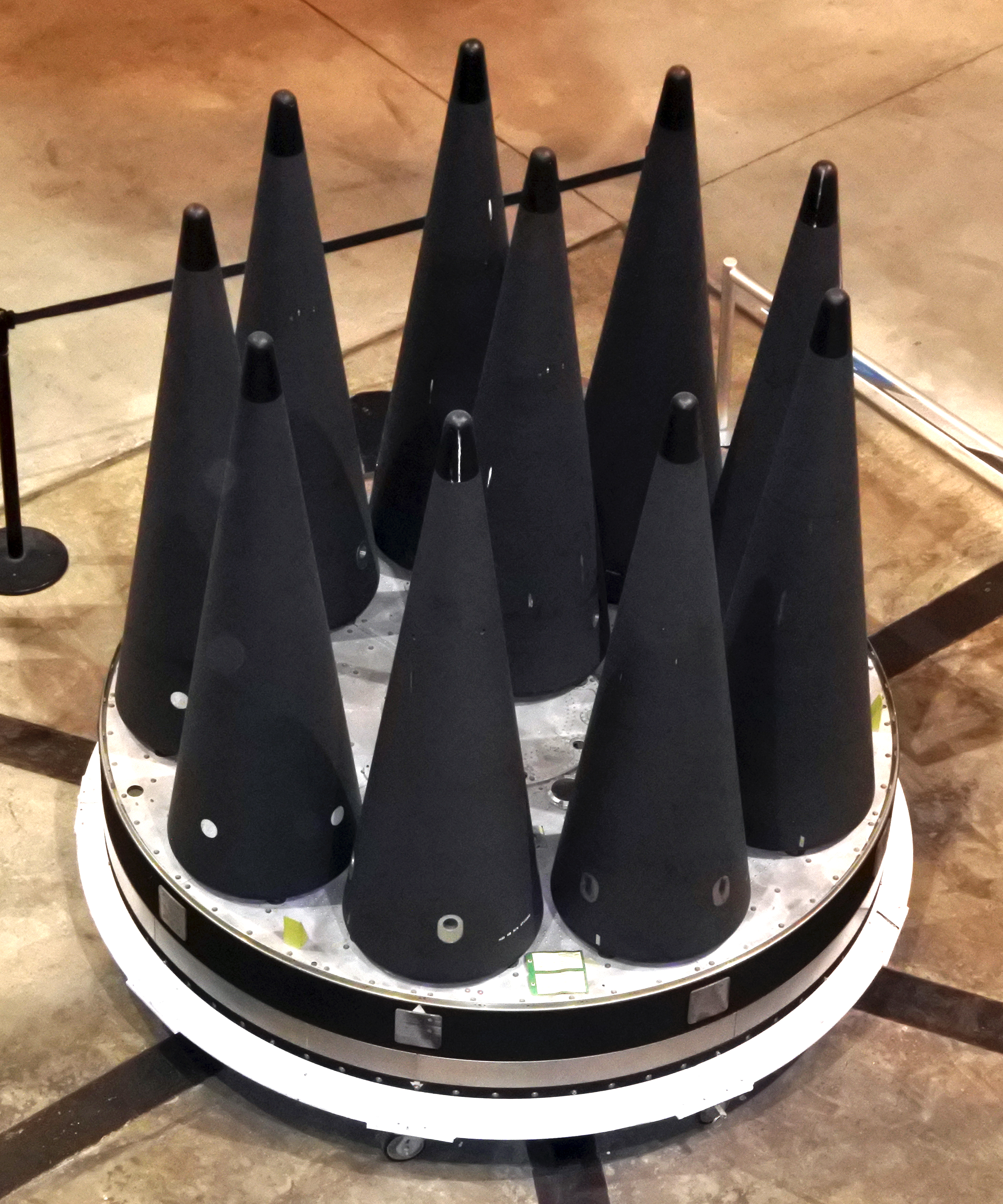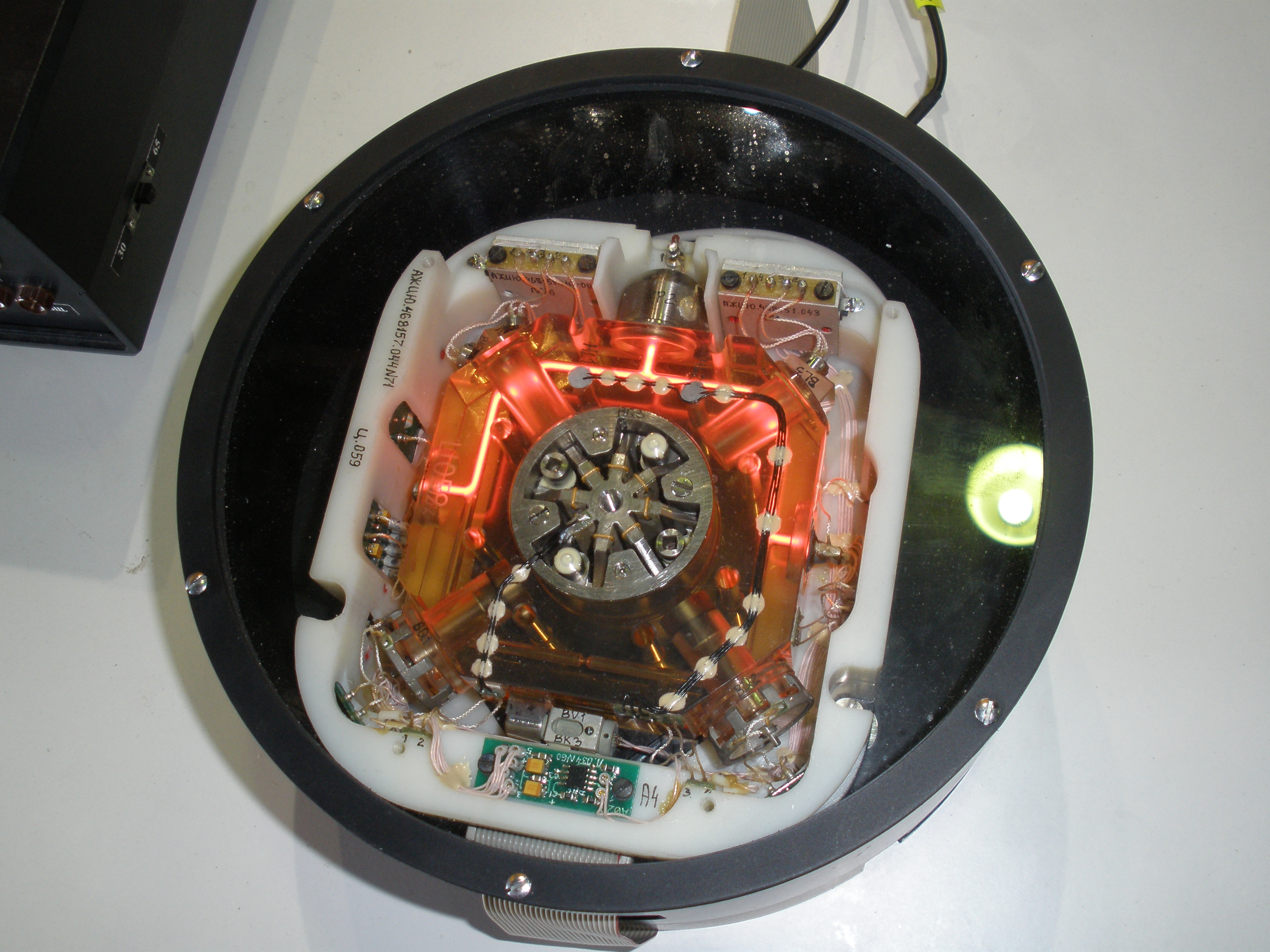|
Agni-V
Agni-V (Sanskrit: अग्नि; lit. Fire) is a land based nuclear MIRV-capable Intercontinental Ballistic Missile (ICBM) developed by the Defence Research and Development Organisation (DRDO) of India. The missile has a range of more than 7,000 km. It is a three-stage, road-mobile, canisterised and solid-fuelled ballistic missile. It is one of the fastest missiles in the world, reaching speeds up to 29,400 km/h. Development Agni-V is primarily for enhancing the Indian nuclear deterrence against China. Until recently, the longest range missile India had was Agni-III with a range of 3500 km. If launched from central India this range was not sufficient to reach targets on the extreme eastern and north-eastern region of China. Most of the major economic centres of China lay on its eastern seaboard. Senior defence scientist M. Natarajan disclosed in 2007 that DRDO was working on an upgraded version of the Agni-III, known as the Agni-V, and that it would be rea ... [...More Info...] [...Related Items...] OR: [Wikipedia] [Google] [Baidu] |
Agni (missile)
The Agni missile (Sanskrit: अग्नि; lit. ''Fire'') is a family of medium to intercontinental range ballistic missiles developed by India, named after one of the five elements of nature. Agni missiles are long-range, nuclear weapons capable, surface-to-surface ballistic missiles. The first missile of the series, Agni-I was developed under the Integrated Guided Missile Development Programme (lGMDP) and tested in 1989. After its success, the Agni missile programme was separated from the GMDP upon realizing its strategic importance. It was designated as a special programme in India's defence budget and provided adequate funds for subsequent development. , the missiles in the Agni series are being inducted into service. The family comprises the following: Agni-I The two-stage Agni technology demonstrator, with a solid-fuel first stage, was first tested at the Interim Test Range in Chandipur in 1989. It was capable of carrying a conventional payload of 1,000 k ... [...More Info...] [...Related Items...] OR: [Wikipedia] [Google] [Baidu] |
Intercontinental Ballistic Missile
An intercontinental ballistic missile (ICBM) is a ballistic missile with a range (aeronautics), range greater than , primarily designed for nuclear weapons delivery (delivering one or more Thermonuclear weapon, thermonuclear warheads). Conventional weapon, Conventional, Chemical weapon, chemical, and Biological agent, biological weapons can also be delivered with varying effectiveness, but have never been deployed on ICBMs. Most modern designs support multiple independently targetable reentry vehicle (MIRVs), allowing a single missile to carry several warheads, each of which can strike a different target. The Nuclear weapons of the United States, United States, Russia and weapons of mass destruction, Russia, China and weapons of mass destruction, China, France and weapons of mass destruction, France, India and weapons of mass destruction, India, the United Kingdom and weapons of mass destruction, United Kingdom, Nuclear weapons and Israel, Israel, and North Korea and weapons of ... [...More Info...] [...Related Items...] OR: [Wikipedia] [Google] [Baidu] |
Strategic Forces Command
The Strategic Forces Command (SFC), sometimes called Strategic Nuclear Command, forms part of India's Nuclear Command Authority (NCA). It is responsible for the management and administration of the country's tactical and strategic nuclear weapons stockpile. It was created on 4 January 2003 by the Vajpayee Government. Air Marshal Teja Mohan Asthana became its first commander-in-chief. Responsibility It is the responsibility of the Strategic Forces Command (SFC) to operationalize the directives of the Nuclear Command Authority (NCA) under the leadership of a Commander-in-Chief who is a three-star rank officer. It will have the sole responsibility of initiating the process of delivering nuclear weapons and warheads, after acquiring explicit approval from the NCA. The exact selection of the target area shall be decided by the SFC through a calibrated, cumulative process involving various levels of decision-making, and with formal approval by the NCA. The SFC manages and ... [...More Info...] [...Related Items...] OR: [Wikipedia] [Google] [Baidu] |
Indian Armed Forces
The Indian Armed Forces are the armed forces, military forces of the India, Republic of India. It consists of three professional uniformed services: the Indian Army, the Indian Navy, and the Indian Air Force.—— Additionally, the Indian Armed Forces are supported by the Central Armed Police Forces, the Indian Coast Guard, and the Special Frontier Force and various Jointness and integration in the Indian military, inter-service commands and institutions such as the Strategic Forces Command, the Andaman and Nicobar Command, and the Integrated Defence Staff. The President of India is the Commander-in-Chief, Supreme Commander of the Indian Armed Forces but the executive authority and responsibility for national security is vested in the Prime Minister of India and their chosen Cabinet Committee on Security, Cabinet Ministers. The Indian Armed Forces are under the management of the Ministry of Defence (India), Ministry of Defence of the Government of India. With strength of over ... [...More Info...] [...Related Items...] OR: [Wikipedia] [Google] [Baidu] |
Multiple Independently Targetable Reentry Vehicle
A multiple independently targetable reentry vehicle (MIRV) is an exoatmospheric ballistic missile payload containing several warheads, each capable of being aimed to hit a different target. The concept is almost invariably associated with intercontinental ballistic missiles carrying thermonuclear warheads, even if not strictly being limited to them. An intermediate case is the multiple reentry vehicle (MRV) missile which carries several warheads which are dispersed but not individually aimed. All nuclear-weapon states except Pakistan and North Korea are currently confirmed to have deployed MIRV missile systems. The first true MIRV design was the Minuteman III, first successfully tested in 1968 and introduced into actual use in 1970. The Minuteman III held three smaller W62 warheads, with yields of about each in place of the single W56 used on the Minuteman II. From 1970 to 1975, the United States would remove approximately 550 earlier versions of the Minuteman ... [...More Info...] [...Related Items...] OR: [Wikipedia] [Google] [Baidu] |
Ring Laser Gyroscope
A ring laser gyroscope (RLG) consists of a ring laser having two independent counter-propagating resonant modes over the same path; the difference in phase is used to detect rotation. It operates on the principle of the Sagnac effect which shifts the nulls of the internal standing wave pattern in response to angular rotation. Interference between the counter-propagating beams, observed externally, results in motion of the standing wave pattern, and thus indicates rotation. Description The first experimental ring laser gyroscope was demonstrated in the US by Macek and Davis in 1963. Various organizations worldwide subsequently developed ring-laser technology further. Many tens of thousands of RLGs are operating in inertial navigation systems and have established high accuracy, with better than 0.01°/hour bias uncertainty, and mean time between failures in excess of 60,000 hours. Ring laser gyroscopes can be used as the stable elements (for one degree of freedom each) in a ... [...More Info...] [...Related Items...] OR: [Wikipedia] [Google] [Baidu] |
Agni-III
The Agni-III () is an Indian intermediate-range ballistic missile inducted into service in 2011 as the successor of the Agni-II. It has a range of and can reach targets deep inside neighbouring countries including Pakistan and China. Introduction India's credible minimum deterrence envisaged a nuclear triad of counter-strike capability which required a long-range missile to provide robust second strike capability. India developed a larger missile, with a heavier payload and longer range in a compact configuration. Description The Agni-III was developed as the successor to the Agni-II. Designed by the Defence Research and Development Organisation (DRDO), Agni-III is a two-stage ballistic missile capable of nuclear weapons delivery. DRDO formed a separate propulsion plant in September 2001 to develop large-sized solid-propellant rocket engines, including the infrastructure for propellant casting. The stubby, two-stage solid-fuel missile is compact enough for easy mobility ... [...More Info...] [...Related Items...] OR: [Wikipedia] [Google] [Baidu] |
Tessy Thomas
Tessy Thomas (born April 1963) is an Indian aerospace engineer and former Director General of Aeronautical Systems and the former Project Director for Agni-IV ballistic missile in Defence Research and Development Organisation. Early life Tessy Thomas was born during April 1963 in Kerala's Alappuzha. Career She joined the Defence Research and Development Organisation (DRDO) in 1988. Thomas began in her career working upon the Agni missile series, where she initially contributed to the guidance and control systems, focusing specifically on inertial navigation systems. She was Project Director of the Agni-V ICBM project. Personal life She is married to Saroj Kumar, a commander in the Indian Navy and they have a son,Tejas. Awards Thomas received the Lal Bahadur Shastri National Award for her contribution for making India self-reliant in the field of missile technology. She was also the recipient of the Dr Thomas Cangan Leadership Award at the Faculty of Management Studies ... [...More Info...] [...Related Items...] OR: [Wikipedia] [Google] [Baidu] |






